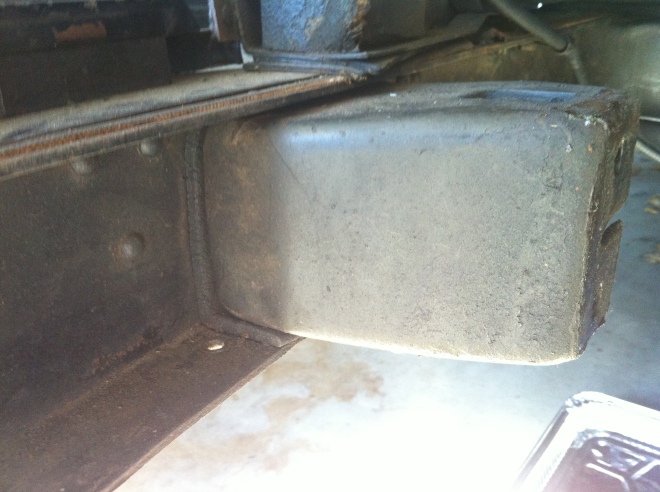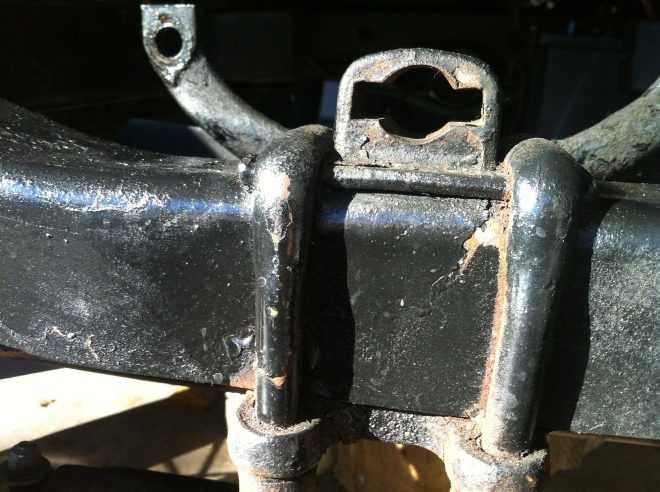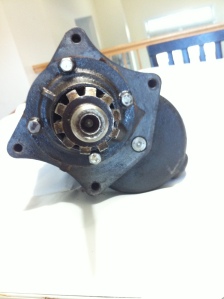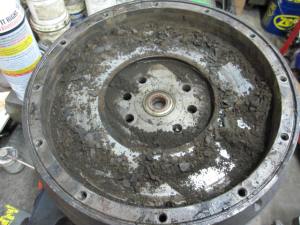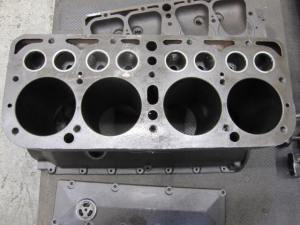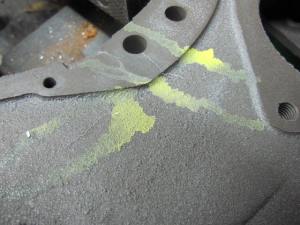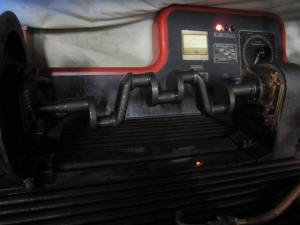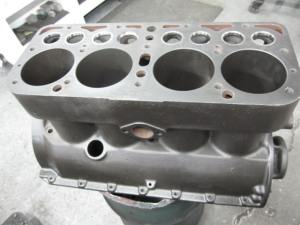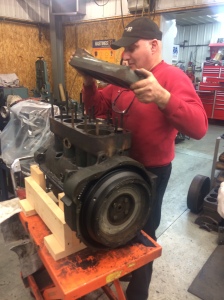“Hey John, I am NOT calling about my car. I don’t want to talk about my car. There is a car show in Nyack tonight {two weeks ago}. I thought you would want to show off your new 1940 Ford”. The response from John was, “I am having a martini with lunch”. I thought to myself, “this could go one of two ways”. What did I know? It went a third.
Since the engine and transmission were removed by me (2014/2015), rebuilt by professionals (2015) who let me help, and reinstalled by me (2016), the car hadn’t felt right and kicked out of gear when going up a steep hill. Excepting for breaking in the engine and for an occasional parade, the car has effectively been off the road since my attempted Burlington VT roadtrip ended in Albany NY back in 2014. It took time to get the engine out, time to get it up north to the engine rebuilders, time to get it back, time to reinstall all the parts, time to break things in, etc. This time was rewarded with a car that couldn’t be driven.
In troubleshooting, I had amongst other things, temporarily swapped out the transmission tower with a known working one. I did this because I was told the majority of transmission related problems originate with the tower and figured that if a working one was swapped out and it fixed my problem, then the problem would be in the tower (and I would not have to take out the engine or transmission). The swap out seemed to help the problem a little but the car still kicked out of gear. This led me to conclude that the tower and its parts were ok. Having done this and in hopes to diagnose a problem instead of replacing parts randomly (and having to remove/install the engine and transmission countless times), I researched every possible cause of the kick out problem (with calls to the boys at J&M Machine, Steve Mitchell from Mitchell Overdrive, MAFCA’s technical director Jim Cannon, Les Andrews who literally wrote the book on Model A repairs, Tom Edny who is a transmission guru, and too many other people to list). What I found was that I didn’t have the time/tools/skills to do this work alone. As mentioned in the past, John Karal is our local Model A guru. You may have seen his high hit youtube video rebuild of my 1929 Phaeton’s transmission and a controversial video of him measuring warp on my rebuilt bellhousing. The car went to John’s garage in June.
Les Andrew’s book notes that a warp in the bellhousing COULD be the cause a car to go out of gear if under load (such as going up a steep hill). The first think John did was remove the engine, measure the trueness of the bellhousing, and swap it out with a new one. Using a dial indicator my original bellhousing exhibited a warp of 52/1000s (measured “on the block” and with its thick gaskets torqued tight and evenly). John is going to re-record this video at some point incorporating some of the suggestions he receive and some more of his findings. 52/1000s is well above the specified tolerance of 6/1000s. The replacement bellhousing was an original that measured a warp of only 1/1000 top to bottom and 4/1000 side to side. When installing the horseshoe shims on the reinstall, John utilized feeler gages to measure what would be the correct shim size. This was done with the dial indicator remaining in place. According to John, the new (at least to me) bellhousing was effectively perfect. John also insisted that since the engine would be going in/out of the car potentially more than once, that the original motor mounts be replaced with “float-a-motor” mounts because they would facilitate future uninstalls/installs and that I could eventually put the originals back into the car. So much for me going “all original” (I’ll change them back at some point when I am ready to do the frame off paint job). With this work completed, John took the car for a test drive. The test drive yielded a car that, instead of forcefully kicking out of gear would gently slush out of gear. So, we would likely conclude that the tower is fine and the engine is fine. He went hunting for other things.
John’s next thought was to check/measure the modern universal joint that replaced the original. The universal joint I had installed was a very well made one from Bob Drake and purchased from Brattons. I am told Drake’s parts are normally great. John reports that this “correct” part has a different design than the original one. Part of the design is a concave washer that was “captive” (it can’t be removed). John believes this was installed backward by the manufacturer. He suspected that this might enable to the U-joint to move about 1/8th an inch which could in turn cause the transmission shaft to move and kick out. <<< Quite frankly, John lost me in his description>>>. John happened to have an original style universal joint in his room of parts, so he decided to swap out the new one with the original one. The Bob Drake part was swapped with a nearly perfect original style u-joint. I’ll be reaching out to Brattons who, as always, has stood behind their parts and did note that they stopped selling this part shortly after I purchase mine.
Before putting it all back together, John wanted to measure all the other parts (including those in the transmission) and use Tom Edny’s checklist on what causes a transmission to go out of gear as one of his guides. I was also encouraging the possible swap out of the entire transmission to a known working one this way we could definitively rule out issues with the engine and universal joint. With this all in mind, I though it wise to reach out to Jim Cannon at MAFCA so he could share his insight. Jim already knew of my car and was happy to lend his expertise. When it became apparent that my ability to relay information was going to be insufficient, I asked John and Jim if they could speak directly. After a few failed attempts, Jim and John spoke and John accepted that their might be a glitch in the transmission (the very one he rebuilt in the online video). Keep in mind, we already ruled out the tower as we swapped it with a known working one. Based on the conversation, John changed the transmission main shaft in case the clearance between the main shaft and the 1st reverse and the high gear was a problem. Apparently, when you install a gear onto the shaft, it should slowly slide down (as opposed to drop and klunk into place). John noted that on the replacement shaft, the gears slowly settled into position (after John “lapped” the shaft and a replacement 2nd high gear was used as the one in there had a 6/10,000 clearance and the new one had 2/10,000 clearance).When replacing the 2nd High gear, John noticed “witness marks” (a scratch or dent that evidences that parts were touching) where the gear and the forks meet. GUESS WHAT….THERE SHOULDN’T HAVE BEEN ANY MARKS HERE. Apparently the fork was not sitting against the gears properly. The forks are part of the shifting tower – you know, the very tower we swapped out with a known working one OVER A YEAR AGO. In looking at the marks, John saw that the marks weren’t even (they were NOT true to eachother). This means that something was bent or not sitting right. As the gear couldn’t have been bent, it must have been the forks. After measuring the forks, John concluded that the forks must have gotten bent when he was installing them onto the shifting rod.
I want to stress again that I did previously swap out the tower with a known working one and it did not solve the problem…. so there was no reason to believe that the problem was in the tower (including the forks).
This isn’t where the story ends. John and I take the car for a drive before I officially pick it up. The car seemed to drive ok. There are a few things I noted when we got back to his shop:
- Slight oil leak from #8 bolt (probably a touch of gasket sealant will fix this. I am ignoring it for now)
- Slight leak from side of headgasket (I am ignoring this for now)
We quickly retorqued the engine.
John gave me a list of things he did/didn’t do to the car including telling me that the rear light wiring wasn’t right, the horn was broken, the floor boards weren’t located down (so I could adjust the brake lights), that he rewired the front lights back to the original ford-plunger style (which I hate), that he un-adjusted the brakes to make installing the engine easier, etc.
I leave for the 15 mile drive home. After the first bump in the road, I hear a CLANK and then the sounds of what I assume was a drip pan hanging from one side and clunking up and down – the gas pedal top also came off and thankfully landed on top of the transmission and not through to the road. I decide to stop at my sister’s house which is around the half way home market to check under the car. I get to my sister’s house and there is oil now dripping steadily on her driveway. I move the car to the road. I am just hoping that the rear main wasn’t damaged as the dripping was coming from what looked like that area of the engine.
With a closer look, there is a solid drip of oil from big cotterpin under bellhousing, there is evidence that of lots of oil came out of the filler tube and the dipstick hole. So much for a nice clean engine – actually, I am kind of pissed that I now have to clean it. I checked the dip stick and even with a car that was just driven, it is WELL above full. I called John to let him know and he thinks he may have overfilled the oil. He told me that he probably did and that it will find its own level after being driven for a bit (and I should put something under it in in the garage). If it is an overfill, this is just an inconvenience. With the drip pan back in place (using a washer to help the cause), I drove home and placed cardboard under the car to catch the dripping oil.
That Sunday I quickly rebolted the drip pan (filing down washers so they would fit properly and make up for old tabs that are work away, visited the wiring for the brake light (which was fine), adjusted the break light switch which was set at a position where it was always “on”, and removed and brought inside the horn which I quickly rigged to work (I’ll do a “more correct” repair later). I then took the car up the biggest hill in the area. It remained in gear.
The car remains “unfinished”. I have to go through my stuff and find everything I removed and put things back. There are parts such as the felt for under the pedal plate that I have to find/order and other things such as floor board screws and cup washers that I haven’t seen in years.
It’s been years since I’ve been able to drive the car or since it has been all in one piece. It will probably take a few weeks before I have the chance to put it all back together and finish bringing the car back to where I want it. Last Monday I brought the car for the annual state inspection. Last Tuesday, I brought it to a village event in Nyack. Two days ago, I drove it 20 miles up/down hills and yesterday I went on a nice 15 mile drive.

While it is great having the car back, after the engine and transmission were “restored”, the follow up repairs to fix this “out of gear” issue (which never should have happened and seems to have been the result of multiple issues) costs me a few thousand dollars and countless hours. In this regard, I can’t help to feel a bit forked over and just warped from the process. I guess the universe just wanted to keep me off the road for a little longer. Hopefully it will be 80+ more years before I have to go through anything like this again. As the moon rises over the Hudson River, I think it is time for me to go get myself a martini — or perhaps a pint of tequila.

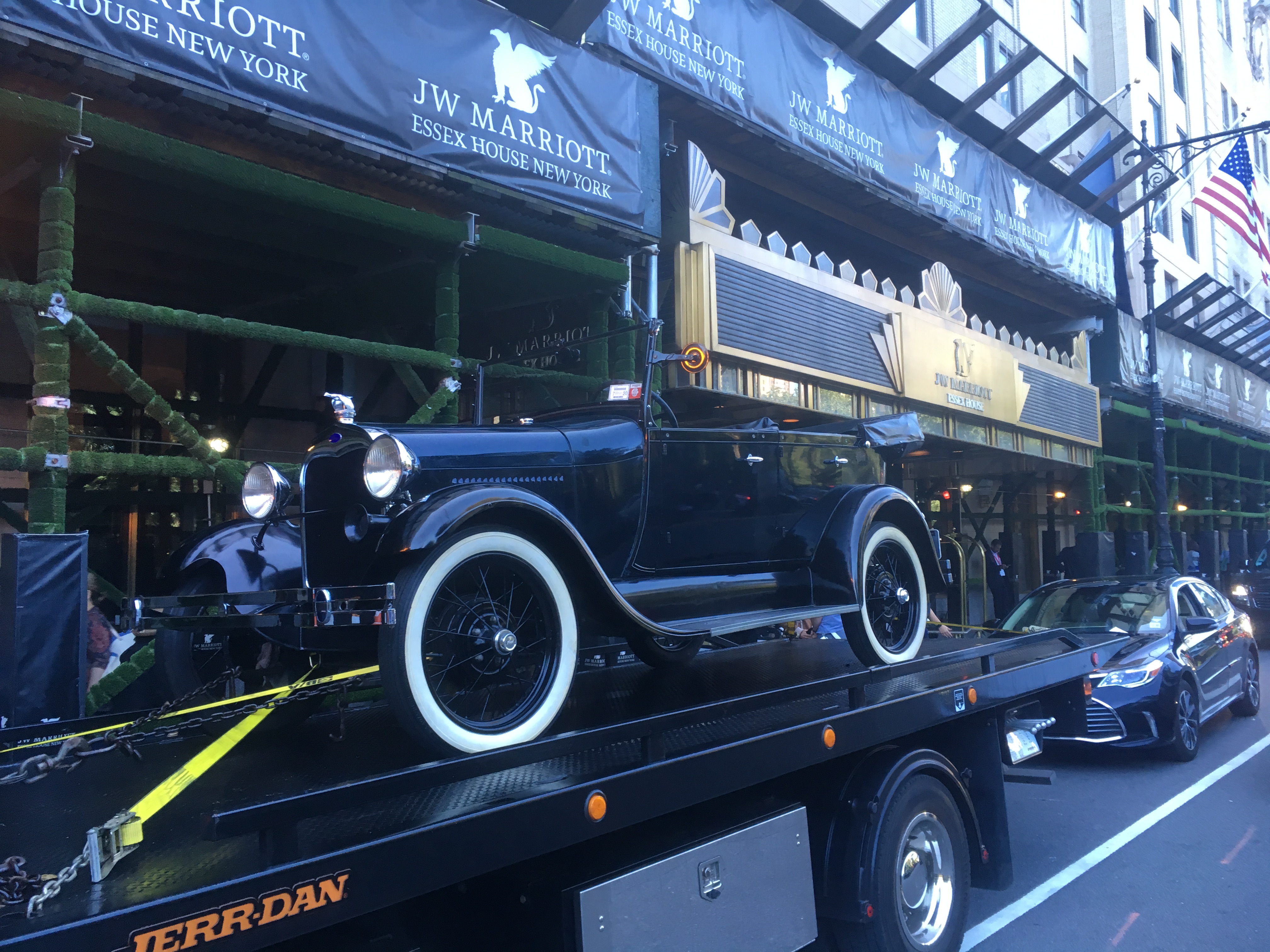



![IMG_8029[1]](https://oldcarroadtrip.wordpress.com/wp-content/uploads/2019/10/img_80291.jpg)
![IMG_6952[1]](https://oldcarroadtrip.wordpress.com/wp-content/uploads/2017/10/img_69521.jpg)


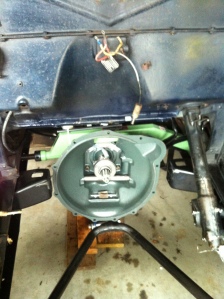


![IMG_5088[1]](https://oldcarroadtrip.wordpress.com/wp-content/uploads/2015/06/img_50881.jpg?w=660)


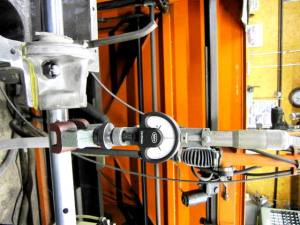
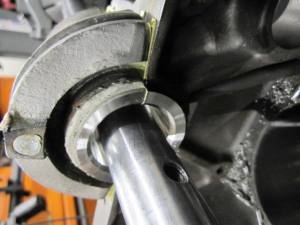


![IMG_5088[1]](https://oldcarroadtrip.wordpress.com/wp-content/uploads/2015/06/img_50881.jpg?w=224)

